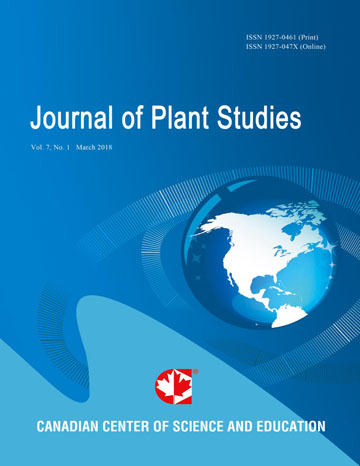Antimicrobial Activities of Leaf and Stem Bark Extracts of Blighia sapida
- Ubulom M. E.
- Udobi E.
- Akpabio I.
- Eshiet Udeme
Abstract
Antimicrobial investigation of the leaf and stem bark extracts of Bligha sapida was carried out against pathogenic bacteria (Staphylococcus aureus, Bacillus subtilis, Escherichia coli, Shigella dysenteriae) and fungi (Candida albicans, Microsporum canis, Aspergillus niger and Aspergillus fumigatus). The two extracts did not exert antifungal effect on any of the tested fungal species, at the concentrations used in this study but exhibited activity against S. aureus and B. subtilis but not against E. coli and S. dysenteriae. The stem bark extract was more potent than the leaf extract. The highest stem bark extract concentration (200 mg/ml) resulted in inhibition zone diameter (IZD) of 14.33 + 0.57 and 15.00 + 0.00 for S. aureus and B. subtilis respectively, whereas the same concentration of the leaf extract resulted in IZD of 10.66 + 1.15 and 9.33 + 0.98 for S. aureus and B. subtilis respectively. Minimum inhibitory concentrations (MIC) of 12.5 mg/ml, and 100 mg/ml were obtained for the stem bark extract assayed against B. subtilis and S. aureus, respectively. With the same extract, minimum bactericidal concentrations of 25 and >100 mg/ml were obtained for B. subtilis and S. aureus respectively. Phytochemical screening revealed the presence of saponins, anthraquinones, cardiac glycosides and flavonoids in both extracts. Alkaloids, tannins, phlobatannins and terpenes were also detected in the leaves. Results obtained, explains why parts of this plant are used traditionally for the treatment of various infections.
- Full Text:
 PDF
PDF
- DOI:10.5539/jps.v2n2p47
Index
- AGRICOLA
- CAB Abstracts
- CABI
- CAS (American Chemical Society)
- CNKI Scholar
- Elektronische Zeitschriftenbibliothek (EZB)
- Excellence in Research for Australia (ERA)
- Google Scholar
- JournalTOCs
- Mendeley
- Open policy finder
- Scilit
- Standard Periodical Directory
- Technische Informationsbibliothek (TIB)
- WorldCat
Contact
- Joan LeeEditorial Assistant
- jps@ccsenet.org
